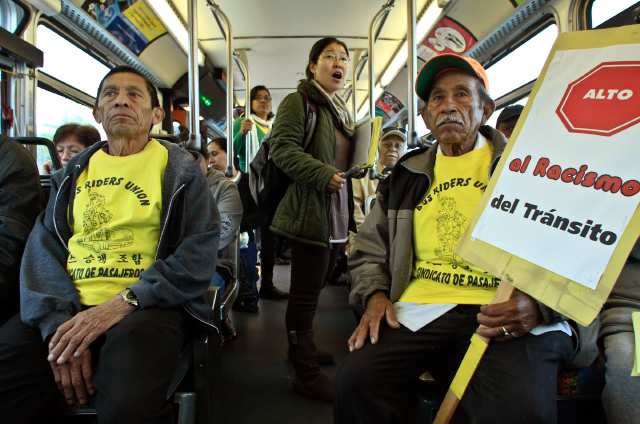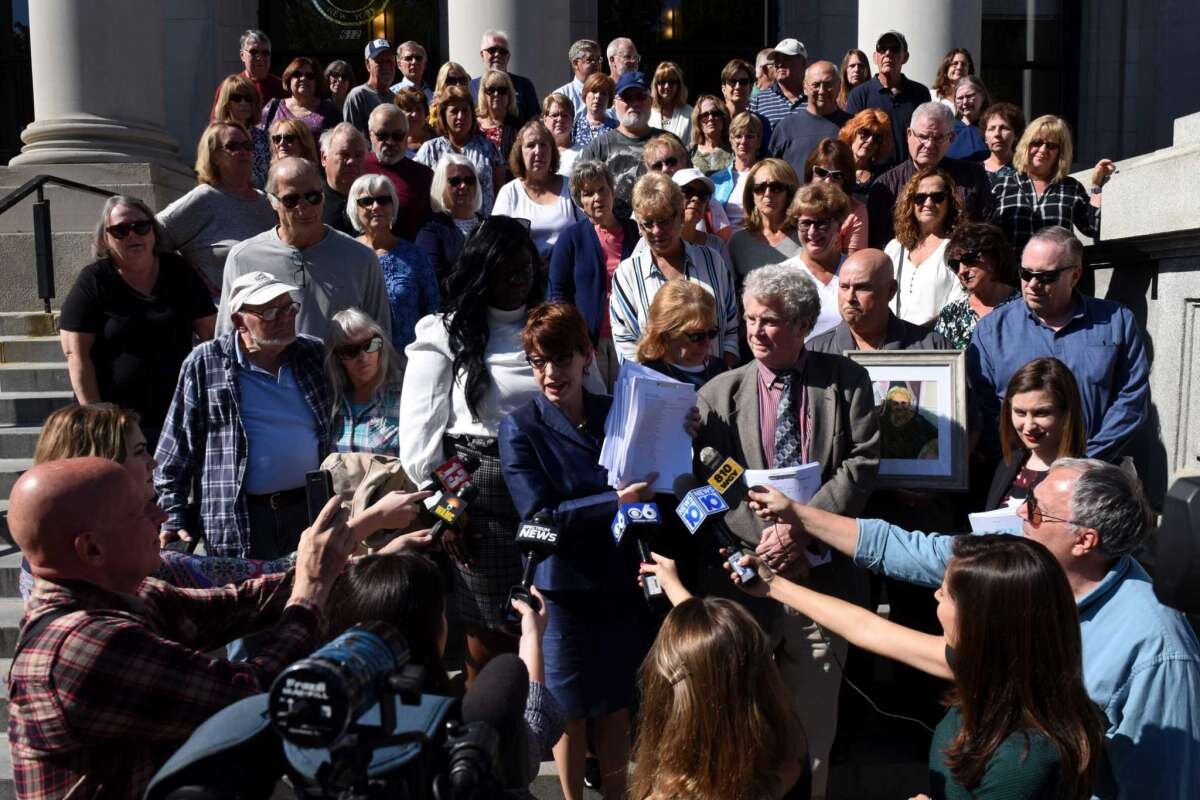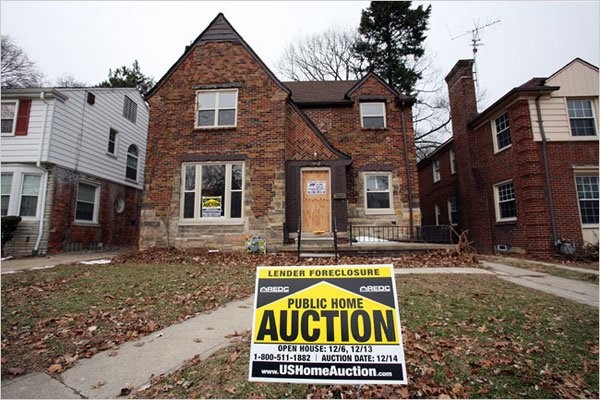Economic Justice For Los Angeles Bus Riders!
Bill Lann Lee, Senior Counsel at CREEC and former Impact Fund board member
Only the desperately poor took the historically overcrowded, poorly maintained Metropolitan Transportation Commission (MTA) buses to work or to shop.
The Labor/Community Strategy Center, founded the Bus Rider Union in the early 1990’s as part of its campaign to prevent increases in fares, preserve the monthly bus pass, improve maintenance, and reduce overcrowding.
The inequities between the MTA’s treatment of bus and rail were stark,
As part of Impact Fund's 25th anniversary we continue our look back on cases that made a difference...
The Impact Fund’s grant to the Labor/Community Strategy Center to campaign against disinvestment in Los Angeles’ bus system was one of its best investments. By the time the court relinquished jurisdiction two decades later, the case had resulted in over two billion dollars in benefits to the class of over 500,000 bus riders in Los Angeles.
Only the poor do not own a car in LA. Only the desperately poor took the historically overcrowded, poorly maintained Metropolitan Transportation Commission (MTA) buses to work or to shop. By 1990, over 95 percent of bus riders were minority black or Latino. The deplorable condition of LA’s public bus system was even cited by an official commission as a key cause of the 1963 LA riots.
Grassroots organization, the Labor/Community Strategy Center, founded the Bus Riders Union in the early 1990’s as part of its campaign to prevent increases in fares, preserve the monthly bus pass, improve maintenance, and reduce overcrowding.
The issue touched a nerve and the Bus Riders Union had 20,000 members by the mid-90’s.
After months of testifying at MTA meetings, demonstrations, and a full court press of agitation, the Bus Riders Union in 1993 faced certain defeat before the MTA, which wanted to divert money from inner city bus to new rail construction for suburban riders.
At that point, Eric Mann, the head of the Center, visited the Los Angeles office of the NAACP Legal Defense and Educational Fund to find out his legal options. We got a TRO restraining the proposed fare hike and the elimination of bus passes and loads of smoking gun discovery to prepare for an expedited trial.
Two years later, we had a settlement in place that put hundreds of thousands of dollars for maintenance and improvements, hundreds of new buses and a formula that eventually added thousands more new buses. The litigation helped propel the Bus Riders Union’s organizing and the provision in the settlement for the Union’s participation in a post-settlement Joint Working Group gave the Union a continuing role in County-wide transportation decision-making.
The case was a singular collaboration between heavy-weight organizers as clients and the original civil rights litigation law firm founded by Thurgood Marshall, a collaboration reminiscent of the March on Selma. The lawyers had to learn to litigate in an environment where the clients were constantly planning and mounting demonstrations.
The case was high visibility with the Center and Union adept at keeping the LA Times and television stations focused for months at a time on the issue and the case.
The case was a classic civil rights case involving poor minorities whose need for basic travel to jobs and for everyday life fell victim to the desire of public officials to serve rail riders from the better-off, mostly white suburbs and the lure of flashy new trains and ribbon-cutting at sparkling new train stations.
The case was put together the old-fashioned way, reviewing boxes of paper files, one document at a time in a compressed time frame. The discovery garnered for trial, revealed in a massive request to admit, was so raw and compelling that the MTA’s decision to discuss settlement was unsurprising to the lawyers.
The inequities between the MTA’s treatment of bus and rail was so stark that not only were transportation experts readily enlisted to testify, but the Reason Foundation, a libertarian think tank, weighed in against government waste in building rail lines that remain little utilized to this day.
The case was also remarkable as one of the few uses of Title VI of the original Civil Rights Act 1964, the law prohibiting recipients of federal funds to discriminate in using those funds. Because it was widely expected that the Supreme Court would bar disparate impact claims under Title VI, which it did do eventually, the lawyers’ strategy was to build a strong case of intentional discrimination as well as disparate impact.
Last, the legal team was stellar. Besides Connie Rice and me, LDF lawyer Robert Garcia and Richard Larson for the ACLU of Southern California were the core team. Richard, who passed away last year, in particular, made sure that the MTA actually implemented the settlement for the benefit of bus riders in years of proceedings before the special master and 9th Circuit.












